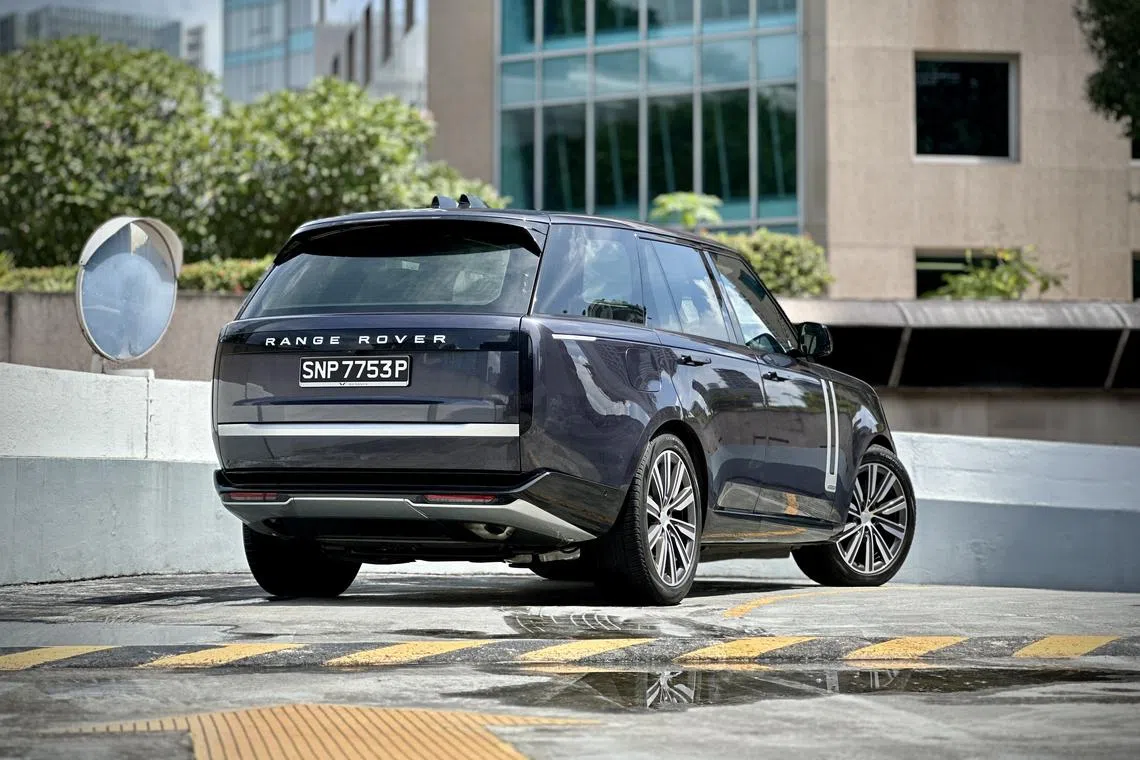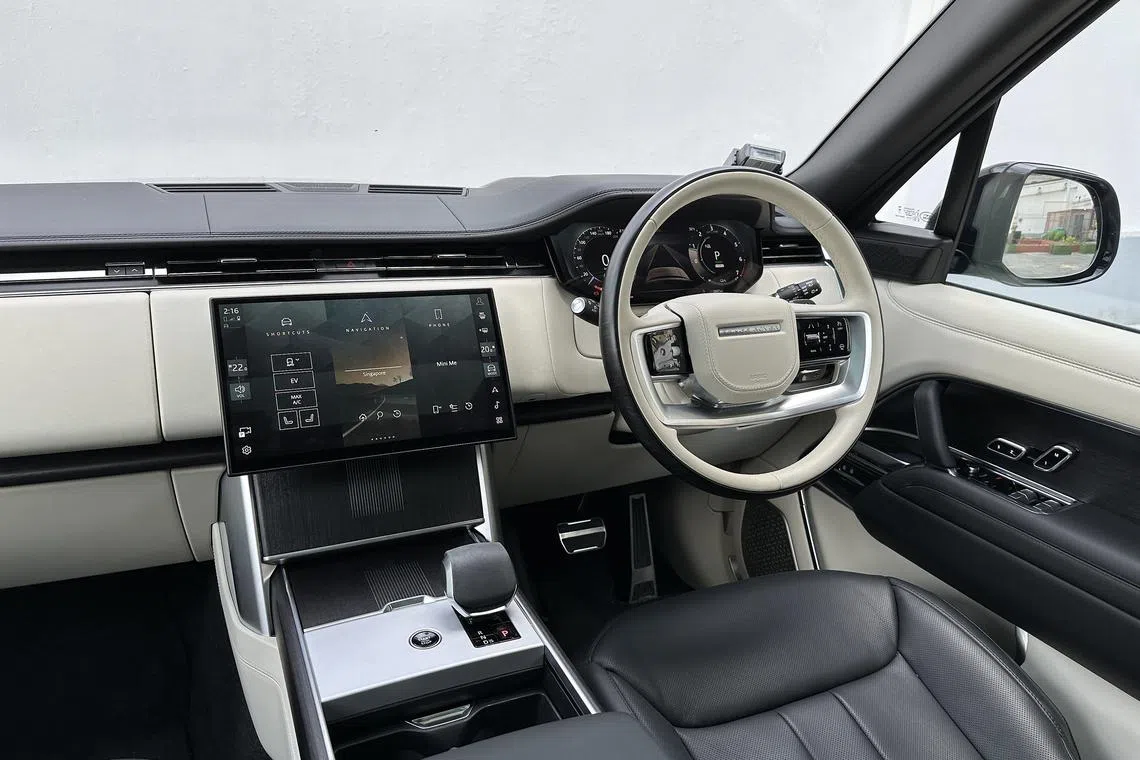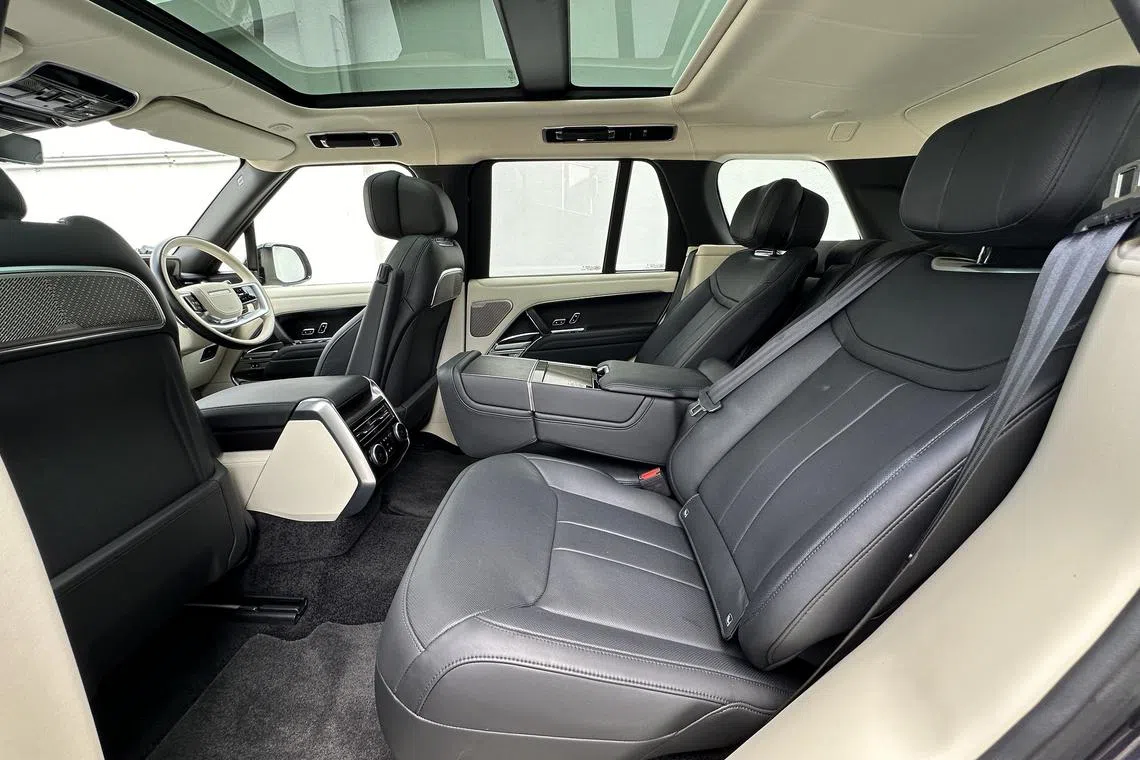Plug-in Range Rover plays the long game
With the ability to cover a couple of days’ motoring on electric power, the P550e could go weeks or even months without refuelling
Webservice User &
Leow Ju-Len
RANGE Rovers can go anywhere, and the P550e version even ventures into electric car territory. It’s a plug-in hybrid, meaning it has a battery pack that can power it for up to 120 kilometres before its petrol engine has to take over.
That doesn’t sound very far, but if you think about it, most of us do less than half that distance every day, so assuming you have easy access to charging, you might go weeks or even months in this eco-minded beastie without burning a drop of fuel.
Like other plug-in hybrid electric vehicles (PHEVs), the P550e is effectively two cars in one: a short-range electric vehicle (EV) for daily emissions-free motoring, and a combustion machine for longer journeys or when you can’t find a charging point (or don’t have the time to hang around one).
Think of it as a bridge to the electric car future, in that it’s perfect for someone who seriously dislikes putting petrol in their car but isn’t completely sure about breaking up completely with Big Oil – the thing about bridges is that you can go back and forth across them, after all.
The battery here holds 31.8 kilowatt-hours (roughly half as much as a full EV’s energy capacity), and a 160 kW motor lends its muscle to the task of shoving more than 2.7 tonnes of Range Rover around. You can charge the lithium-ion pack at up to 50 kW, which would top it up in roughly an hour. A 3-litre turbo engine also resides under the bonnet, ready to deploy its considerable brawn.
That sounds convoluted, but on a simple level, the Range Rover is just a mighty fine luxury Sport Utility Vehicle (SUV) with an amazingly broad range of talents.

If off-roading ability is important to you, it has air suspension, low-range gears for crawling up and down steep terrain, plus all manner of traction management systems to make it unstoppable. I once spent 30 hours in muck with a convoy of Land Rovers, and the Range Rovers were the only cars that never got stuck.
If being chauffeured to the opera house is how you use your SUV, the back seats recline while the front passenger seat bows deeply to create space, all at the tap of a virtual button on the rear touchscreen.
And if you usually take the controls yourself, nothing short of a Rolls-Royce feels as majestic. The view from the driver’s seat must be what it’s like to peer out from the bridge of a battleship. And though you’re always aware of its size, the P550e doesn’t feel unwieldy; it’s positively light on its feet for something as burly as an elephant.
That said, the low cornering limits don’t invite any naughtiness on your part. Instead the Range Rover is masterful at soothing the nervous system with its light steering, supple ride quality and vault-like build.
Much of that is down to its PHEV hardware. In EV mode, the big Rangey glides over the road like a hawk in flight, and it’s smooth for the most part (you do feel the odd clunk as the electric motor shuttles through the transmission’s gears). With only batteries doing the work, the P550e is lively enough to keep up easily with town traffic, too.

It’s even quite credible as an EV. I didn’t drive it particularly carefully, and still eked 91 km from a full charge before the engine rolled its sleeves up and took over. That’s enough for a couple of days’ typical motoring here.
In fact, it’s almost a pity and not a little ironic that the whole point of the P550e is to make petrol obsolete, because its six-cylinder is a jewel of an engine that is just so good at burning the stuff. It spins silkily and has the most cultured voice, but when you want it to, it hits like King Charles’ bodyguard.

But for reasons I can only attribute to cost-cutting, the Range Rover now has no physical climate control or entertainment system switches. Instead, everything is nested in the main touchscreen. The user interface is snappily responsive and pleasing to the eye, but jabbing a screen to turn up the air-con is not a patch on turning a well-oiled knob. Note to Land Rover: Please press “Undo”. You’re not a Chinese startup.
Besides, such penny pinching has no place in a car with a price tag worth half a condo. Nevertheless, considering a Rolls-Royce Cullinan costs more than twice as much but doesn’t feel twice as opulent, the Range Rover still looks good for a luxury SUV. The plug-in version looks even better as two luxury SUVs in one.
Land Rover Range Rover 3.0 Autobiography P550e Engine 2,996 cc, turbo straight-six Electric Motor 160 kW, 450 Nm System Power 550 hp from 5,500 to 6,500 rpm System Torque 800 Nm from 2,000 to 5,000 rpm Gearbox 8-speed automatic Battery Lithium-ion, 31.8 kWh Charge Time/Type 5 hours/7 kW Alternating Current, 40 minutes 0 to 80 per cent/50 kW Direct Current Electric Range Up to 120 km 0-100 kmh 5 seconds Top Speed 250 kmh Fuel Efficiency 0.8 L /100 km Agent Wearnes Automotive Price S$806,888 with Certificate Of Entitlement Available Now
Decoding Asia newsletter: your guide to navigating Asia in a new global order. Sign up here to get Decoding Asia newsletter. Delivered to your inbox. Free.
Copyright SPH Media. All rights reserved.



